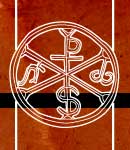
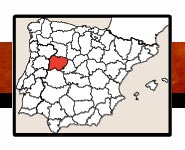

 |
 |
||
 |
|||
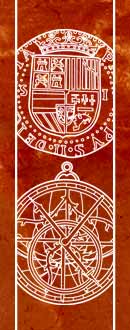 |
(40)/R-TE/SALA-PF-CHA-40.jpg) |
-55/BOOK-cort-40.jpg) |
 |
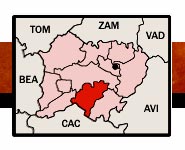 |
||
 |
|||
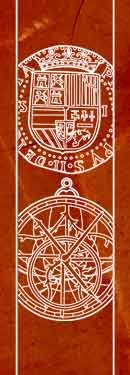 |
CONJUNTO HISTÓRICO DE LA ALBERCAINFORMACIÓN HISTÓRICO-ARTÍSTICAQuizás, el pueblo más turístico de la provincia de Salamanca (con lo que ello conlleva) es uno de los conjuntos históricos de la Sierra de Francia más conocidos a nivel nacional; su bellísima plaza mayor, dispone de un emblemático crucero de granito, no podemos olvidar la iglesia de nuestra señora de la Asunción, datada en el siglo XVIII (aunque su pulpito policromado se data en el siglo XVI), no te vallas sin encontrar los cráneos, que exhibe esta iglesia en su exterior, una interesante muestra del culto a las animas del purgatorio (único en España). ENTRADAS Y HORARIOSEl acceso es gratuito y el teléfono para conocer los servicios religiosos es 923.415.121 www.laalberca.com |
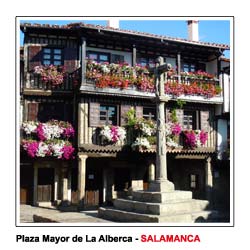 |
HISTORICAL TOWN OF LA ALBERCAHISTORICAL-ARTISTIC INFORMATIONPerhaps the most touristic village in the province of Salamanca (for better and for worse), is one of the most well-known historical sites in The Sierra de Francia; its beautiful main square, has an emblematic granite cross, we can's forget the church of Nuestra Señora de la Asunción, dated in the 18 th century (although its polychrome pulpits is dated in the 16 th century), don't go without finding the skulls, that show this church in the outside, an interesting sample of the cult to the purgatory spirits (unique). TICKETS AND TIMETABLEThe access is free and the telephone to know the religious services is 923.415.121 www.laalberca.com |
 |
MONUMENTOS DE SAN MARTIN DEL CASTAÑARINFORMACIÓN HISTÓRICO-ARTÍSTICASan Martín del Castañar es un pueblo detenido en el tiempo, pasear por sus calles es como viajar al Medievo. La iglesia se data en el siglo XIII, las obras cubren el periodo de los siglos XVI y XVIII, destacando la bóveda de crucería, el artesonado y su espadaña. El castillo de San Martín del Castañar, tiene datación del siglo XV, dispone de 2 torres y muralla parcialmente almenada; dentro además de un cementerio tenemos el Centro de la Reserva de la Biosfera. La plaza de toros es muy arcaica, es una de las tres más antiguas de España, y fue el espacio de paradas militares en el Medievo. ENTRADAS Y HORARIOSLa iglesia suele estar abierta en horarios turísticos, incluso los lunes; mientras el castillo suele estar abierto cuando el Centro de la Reserva de la Biosfera abre y este tiene un horario de 11:00-14:00 y 17:00-21:00, cerrando los martes. www.reyconet.es/sanmartindelcastañar |
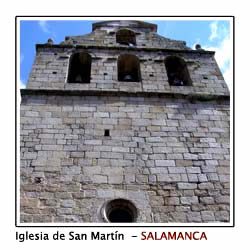 |
MONUMETS OF SAN MARTIN DEL CASTAÑARHISTORICAL-ARTISTIC INFORMATIONSan Martín del Castañar is a town stopped in tipe, walk through its streets is like traveling to the Middle Ages. The church date back to the 13 th century, the works cover the period of the 16 th and 18 th centuries, highlighting the ribbon vault, the coffered ceiling and its belltower. The castle of San Martín, dating from the 15 th century, has 2 towers and partially battlements in the walls; in addition to a cemetery we have the Biosphere Reserve Center. The bullring is very archaic, not in vain is considered one of the three oldest in Spain, we know that it was the space of military stops in the Middle Ages.TICKETS AND TIMETABLEThe church is usually open during tourist hours, even on Monday; while the castle is usually open when the Bisophere Reserve Center opens and it has a timetable from 11 am to 2 pm and 5 pm – 9 pm, closing on Tuesdays. www.reyconet.es/sanmartindelcastañar |
||||
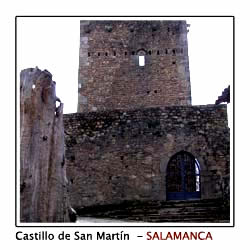 |
 |
UBICACIÓNLA ALBERCA: Por Salamanca coge la carretera de Vecinos, en La Alberca hay aparcamientos disuasorios en la entrada del pueblo, úsalos. PEÑA DE FRANCIA: Por Salamanca hay cartelería para llegar a la Sierra, la subida se realiza por 2 carreteras una occidental desde Monsagro y otra oriental desde El Caserito. Se trata de una carretera de montaña precaución. SAN MARTÍN: Desde Salamanca coger la carretera de Vecinos, después llegado a Tamames, coger la carretera de La Alberca y cuando llegues a El Caserito veras el desvío para San Martín del Castañar. MIRANDA: El mejor acceso a Miranda se realiza por la SA-220 (carretera de Ciudad Rodrigo a Béjar), desde Salamanca se accede por (Vecinos-Tamames-Sequeros). |
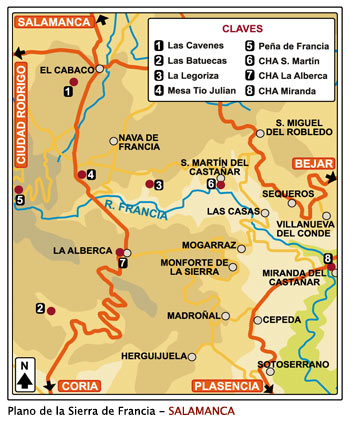 |
LOCATIONLA ALBERCA: From Salamanca take the road of Vecinos, in La Alberca there are deterrent parking at the entrance of the village, use them. PEÑA DE FRANCIA: From Salamanca, there is signpost for Sierra de Francia, the access is posible by 2 narrow roads, one western from Monsagro, and another east from El Caserito. It is a mountain road in which it you must be careful. SAN MARTÍN: From Salamanca take the road to Vecinos, alter arriving to Tamames, take the road to La Alberca and when you get to El Caserito you will see the detour to San Martín del Castañar. MIRANDA: The best way to Miranda is made by the SA-220 (road from Ciudad Rodrigo to Bejar), from Salamanca it is accessed by (Vecinos - Tamames - Sequeros). |
||||
 |
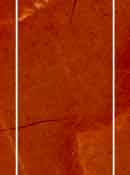 |
ACCESO PARA MINUSVÁLIDOSLA ALBERCA: El empedrado del pueblo es muy irregular, solo es visitable con ayuda auxiliar. PEÑA DE FRANCIA: Los usuarios de sillas de ruedas deben de contar que existe una corta escalinata de acceso en el acceso a la iglesia. SAN MARTÍN: El pueblo tiene un empedrado restaurado y aplanado, apto para sillas de ruedas. El castillo dispone de rampas de madera accesibles para sillas de ruedas, con bonitas panorámicas de la sierra. MIRANDA: El pueblo es accesible para sillas de ruedas (salvo las cuestas), el castillo por su acceso en escaleras no es visitable |
ACCESS FOR THE HANDICAPPEDLA ALBERCA: Users of wheelchairs should consider that the pavement of the town is very irregular, is only visitable with auxiliary help. PEÑA DE FRANCIA: Wheelchairs users should consider that there is a short access staircase at the entrance of the church. SAN MARTÍN: The village has a restored with flat paved, suitable for wheelchairs. The castle has wooden ramps accessible for wheelchairs, from the wall walk you will see amazing views of the mountains. MIRANDA: The village in general is accessible for wheelchairs users (except the slopes), the castle has staircase at the access isn't visitable. |